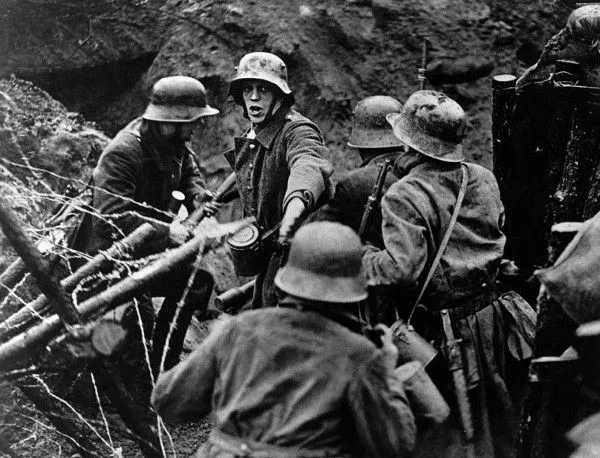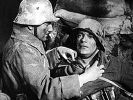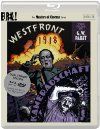Eye For Film >> Movies >> Westfront 1918 (1930) Film Review

A hit on its release in Germany in 1930, banned three years later when the Nazis rose to power and decried it as damaging to the militaty will, GW Pabst's first talking picture is of considerable historical importance. It was one of the first to challenge hitherto state-controlled narratives about war (which were pretty much the same worldwide), following in the footsteps of poets like Wilfred Owen and Siegfried Sassoon by alerting the public to the difference between the glorious propaganda and the brutal reality. Early on in this film, a trench collapses, trapping three soldiers in a tiny pocket of air. Their friend digs them out, but the impression that lingers is not so much of his heroism but of the men's terror down there in the dirt.
These four - known to us as the Bavarian (Fritz Kampers), Karl (Gustav Diessl), the Lieutenant (Claus Clausen) and the Student (Hans-Joachim Möbis) - are characters we remain with throughout what follows, though fate sometimes takes them in different directions. The Student falls for a French girl (Jackie Monnier) who is heartsick at the thought of him returning to the trenches. Karl goes on leave and discovers that life isn't easy back home, where food is in short supply and the women spend all day queueing or are forced into sex work to survive. At the front, death is a constant, with bodies frequently irretrievable. The men try to take it in their stride but it takes a visible toll on their mental health. Scenes of injjured men in hospital have still greater impact now than they did at the time because we know that many of them - especially those with brain damage - would go on to be murdered by Hitler's regime after returning home.

The film is divided into two halves by an intermission of sorts, when the soldiers go to watch entertainers - a second-rate clown, a musician and a dancer who shows what was, for the time, a scandalous amount of leg. This is as much about pleasing the cinema audience as the characters they're watching, and it apparently went down a storm, though it's difficult to connect with today and many viewers will feel that it goes on far too long. It serves the important purpose of reminding us how easily the soldiers' superiors believed their loyalty could be bought.
Also more difficult to appreciate at a distance is the quality of the staging and the special effects. The film looks good, but it's easy to overlook how good it looks in comparison to its peers, and given the limited toolkit then available to filmmakers. Pabst knows how the make a lot out of a little, creating a great deal of atmosphere with mud, water, mist and damp planks of wood. Several of the actors were veterans of the Great War themselves and it shows in the way they react to events around them. Little twitches at the sound of explosions recall the real life terror they once knew. Diessl walks like Klaus Kinski, as if perpetually flinching from some remembered blow.
Though the first half is slow, it has its moments, and in the second half the tension builds. There's more dialogue, we get a little further inside the characters' heads, and Pabst shows what he can do with light and shadow, presenting us with haunting images of body parts and the faces that observe them. There is something here that foreshadows film noir, though it's emerging from something far darker.
Often challenging for a modern audience to engage with, and never an easy watch, this is one for the connoisseurs and for those seeking to understand a conflict which no longer has any survivors. As time robs us of human testimony, film like this only increases in value.
Reviewed on: 20 Jul 2017

















